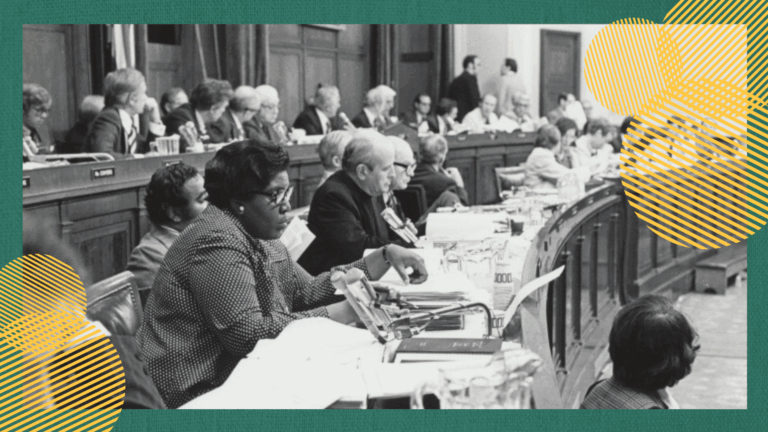The Watergate Investigation

Snapshot
Our snapshot of the Watergate Investigation is a classroom-friendly of our Portrait in Oversight on the same topic. Each of our snapshots is a four-page summary of the historical event. Included in the download, you’ll find:
- Comprehension questions
- Discussion questions
- Answer key
- Audio recording of the snapshot
- Spanish translation of all materials

I am not going to sit here and be an idle spectator to the diminution, the subversion, the destruction of the Constitution …. The Constitution charges the president with the task of taking care that the laws be faithfully executed, and yet the president has counseled his aides to commit perjury, willfully disregard the secrecy of grand jury proceedings, conceal surreptitious entry, attempt to compromise a federal judge, all while publicly displaying his cooperation with the processes of criminal justice. A president is impeachable if he attempts to subvert the Constitution.
Representative Barbara Jordan
The Senate investigation into the Watergate scandal is one of the best-known examples of congressional oversight. It is a story of how members of Congress, despite differing parties, opinions, and political ambitions, ultimately came together at a time of crisis in the best interests of the country, showing what can be achieved when principles rise above politics. The investigation led to the resignation of the president and legislation to strengthen transparency and accountability in presidential elections and in the operation of the federal government.
Content Standards
MI USHG – 8.2.4 Analyze and evaluate the competing perspectives and controversies among Americans generated by U.S. Supreme Court decisions, the Vietnam War, the environmental movement, the movement for Civil Rights (see U.S. History Standards 8.3) and the constitutional crisis generated by the Watergate scandal.
Once you fill out this form, you will be redirected to our download page. Make sure you save the download page so that you continue to have access to our materials!
If you have already filled out the download form, click here.